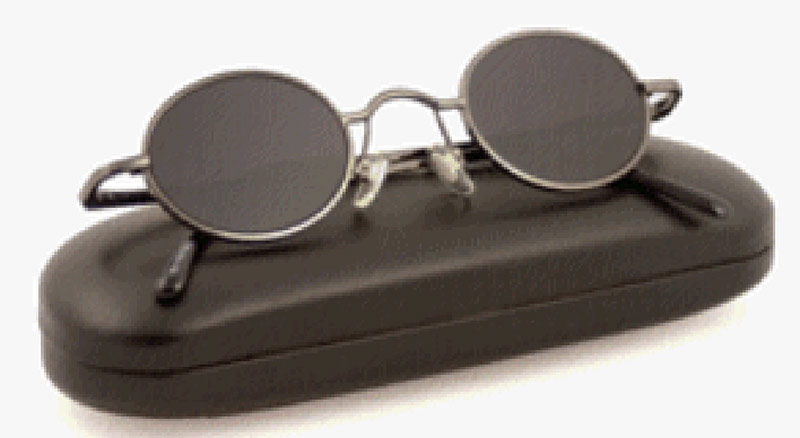By Preston Fassel
It's a sunny day in Rome, 65CE, and you're in the stands at the Circus Maximus (not the Colosseum; that won't be built until 80). As you watch the Gladiators battle, you glance towards the Emperor's box and notice a peculiar sight. There, seated in his box, Nero himself is observing the contest, not with his naked eye, but rather through large, cut emeralds. Though you have no way of knowing it, being a theoretical Roman citizen in the introduction to a magazine article, you're witnessing an optical development that won't be followed up on or explored in depth for almost two millennia. That's because some historians interpret a quote from Pliny as proof that Nero used emeralds for sun protection to watch the Gladiators more comfortably. “Nero princeps gladiatorum pugnas spectabat in smaragdo.”
(The princeps Nero viewed the combats of the Gladiators in a smaragdus. — Pliny, Natural History, 37.16. smaragdus [Gr. σμάραγδος]. It is often translated as “emerald”, but was in fact a category of green stones.)
This is one of the earliest recorded developments of what we would recognize today as sunglasses.
While it may seem unbelievable, considering eyewear has been around since at least 1290, the idea that spectacles could be used to block the sun is a relatively new one in the world of optics. Indeed, sunglasses as we know them today only pop up in the historical record in the late 1700s, in an artist's rendering of an experiment being carried out by chemist Antoine Lavoisier, and even then, it's unclear whether he himself created the glasses or if they're more properly understood as safety goggles. Remarkably, unlike other optical developments such as the bifocal or 1.67 lens material, it's lost to history who precisely came up with the idea of tinting lenses for eye comfort in bright sunlight. Following the picture of Lavoisier, sunwear next crops up in the historical record of the American Civil War, with numerous examples of sunglasses worn by soldiers on both sides of the conflict surviving to this day in museums and private collections. Bottle green and amber appear to have been the most common tints. Worn by snipers during the Civil War, amber ‘sunglasses,’ except for a small, unshaded circle over each pupil that allowed snipers to zero in on their target, with another unshaded slit at the left side of the left lens, allowed the sniper to acquire his target. In fact, soldiers appear to have been among the earliest adopters of sunglasses; they're recorded as being worn by members of the British Army stationed in Colonial Egypt near the end of the Victorian era.
From here, sunwear seems to have entered the mainstream, and the innovators behind it begin to step out of the shadows and into the history books. The first print advertisements for commercially available sunglasses began cropping up in American newspapers in the 1890s, and we know that it was writer Jean-Marie-Théodore Fieuzal who theorized that sunglasses could offer protection from UV rays (although he incorrectly believed that simply dying lenses yellow would suffice). German company Rodenstock ran with the idea, though, and just before the turn of the century, they were manufacturing the first optical lenses that were both dyed to protect from glare and provided UV protection, albeit not 100%; that feat wasn't achieved until Sir William Crookes infused lenses with cerium in 1913.
Despite their availability, sunglasses remained a niche curiosity for most of the first quarter of the 20th century. Prior to the end of the 1920s, they were mostly associated with motorists or movie stars. They didn't begin to get a cultural foothold until entrepreneur Sam Foster began selling inexpensive sunglasses with celluloid lenses on the beaches of Atlantic City in 1929, from whence they developed an iconic connection to the Boardwalk and the life of glamour and intrigue it represented. Even moving into the 1930s, though, sunglasses still held a tenuous place as a trend as opposed to an optical necessity and mainstay; a 1938 issue of Life magazine characterized them as primarily a women's fashion accessory and stated that only 25% of Americans actually benefitted from wearing them.
It was, of all things, World War II that catapulted sunglasses onto the faces of Americans everywhere. The original aviators worn by pilots during the conflict suddenly made sunglasses an icon of US ingenuity, resilience, and heroism, carrying with them a dashing allure of wartime heroism. Unlike other trends, though, once people actually began wearing sunglasses, they began to discover their myriad benefits, and suddenly, sunwear was here to stay. From the Wayfarers of the 1950s to the space age designs of the 1960s and the throwback aviators of the 1970s, sunglasses have become not just a valuable medical device but shorthand for particular eras in American history and an iconic wardrobe piece.
So, as we move into the spring and summer seasons, let's raise a glass(es) to sunwear, that indispensable piece of eyewear that was born out of a desire for eye comfort in the sun.
It's amazing to think that Nero, of all people, was two thousand years ahead of the curve.













